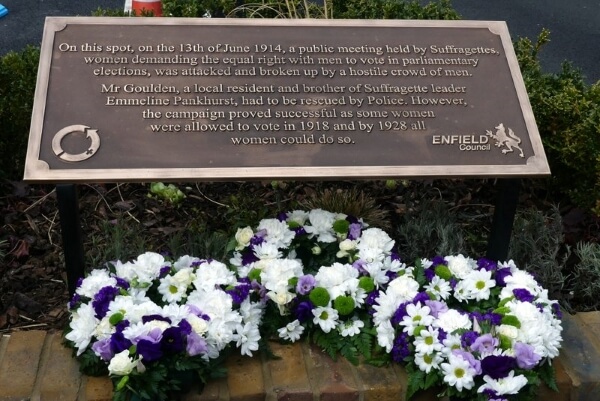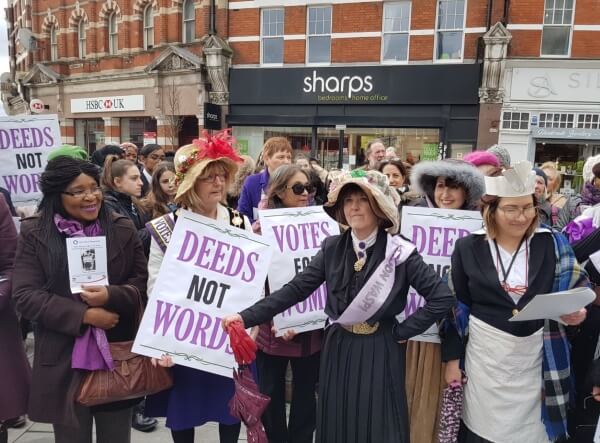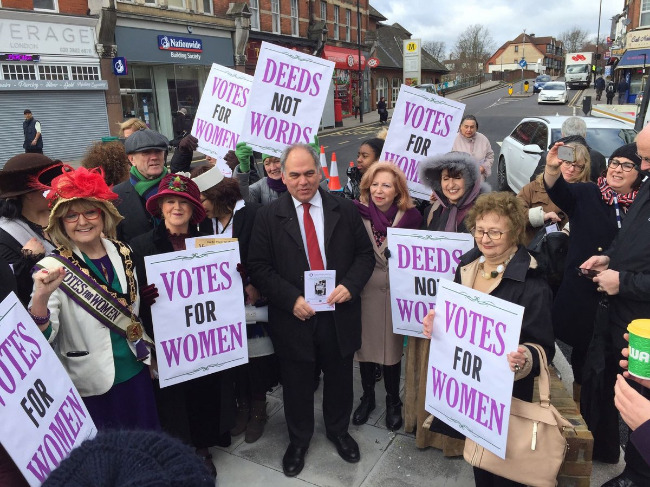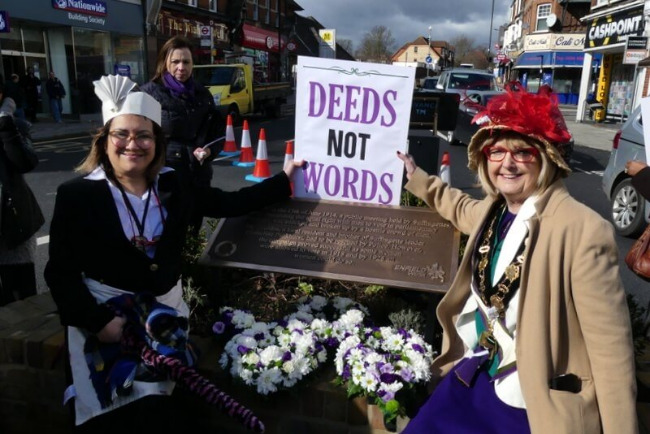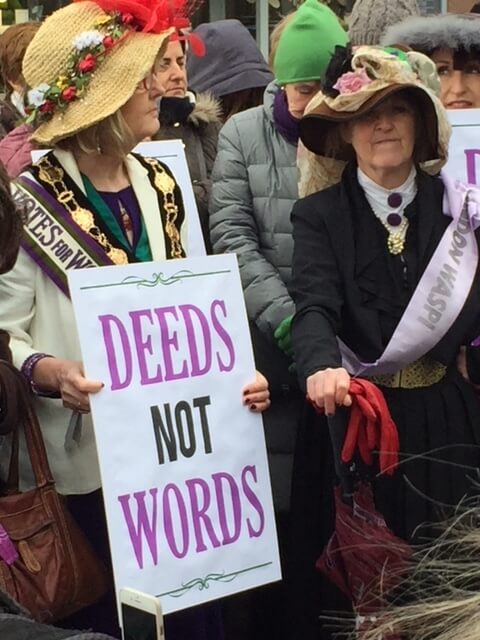2018 is the centenary year of the extension of the right to vote to (some) women. In recognition of the fact that many leading campaigners for women's suffrage lived in and around Palmers Green, Southgate and Winchmore Hill and that local halls, churches and schools hosted campaign meetings, Enfield Council will next month be unveiling a plaque at Palmers Green Triangle.
The unveiling will take place at 10.30am on 8th March - International Women's Day. Palmers Green Triangle has been chosen because it was the site of open air suffrage campaign meetings, including one held in June 1914 which was described as a "riot in all but name".
The story of the incident at the Triangle and subsequent tram chase up Green Lanes has been told before in local history publications and on local websites, so what you see below is just a brief recap.
The June 1914 incident at the Triangle
 It began when members of the Women's Social and Political Union (WSPU) attempted to hold an open air meeting at the Triangle. The WSPU was the most militant of the campaigning groups and in the preceding days and weeks had been running what can only be described as a terrorist campaign - planting bombs in various places, including Westminster Abbey. (According to one account, the Abbey bomb was the reason why when Scottish nationalists "kidnapped" the Stone of Scone from beneath the Speaker's chair, they discovere that it had broken in two.)
It began when members of the Women's Social and Political Union (WSPU) attempted to hold an open air meeting at the Triangle. The WSPU was the most militant of the campaigning groups and in the preceding days and weeks had been running what can only be described as a terrorist campaign - planting bombs in various places, including Westminster Abbey. (According to one account, the Abbey bomb was the reason why when Scottish nationalists "kidnapped" the Stone of Scone from beneath the Speaker's chair, they discovere that it had broken in two.)
The WSPU was headed by three of the best known Suffragettes - Emmeline Pankhurst and her daughters Christabel and Sylvia. The organiser of the Palmers Green meeting was Emmeline Pankhurst's brother Herbert Goulden, whose wife Laura was thde first headmistress of Hazelwood School.
Meeting attendees were greeted at the Triangle by a crowd of protesters who were, in the words of the Recorder for Palmers Green, Winchmore Hill and Southgate, "bent on mischief". Mr Goulden was rescued by a policeman, who walked with him as far as the Fox, where he boarded a northbound tram, but some of the crowd got on the same tram, while others followed by bicycle (a mode of transport for which Green Lanes was at the time well adapted, given the small number of cars then on the road). The Recorder reported that "the ladies of the suffragette party, guarded by police, took refuge in tram cars, the crowd being so great as to cause a temporary suspension of traffic."
The protest then resumed in Winchmore Hill. Mr Goulden, "who bore marks of the fray in the shape of flour", took refuge in the house of a councillor in Station Road, while the mob moved on to Mr Goulden's house in Radcliffe Road, where they threw eggs through an open window until the police arrived.
For a much more detailed account, see the Ruby Galili article referenced below.
But while the June 1914 incident stands out as "something rather more lively than the scenes to which staid and respectable Palmers Green is accustomed", it was only one among many Suffragist and Suffragette connections with our area. The Recorder was evidently sympathetic to the cause and carried several interesting accounts of local activities, with mentions of street names and churches that are still familiar to us today. In 2012 the late Ruby Galili used these articles to build up a picture of local activities and personalities, which she published online as Suffragettes of Palmers Green, Winchmore Hill & Southgate 1909-1916. There's also a shorter account by Sue Beard of Palmers Green Jewel in the North - Women, know your place!
